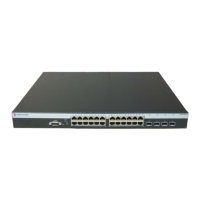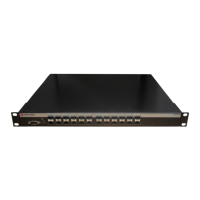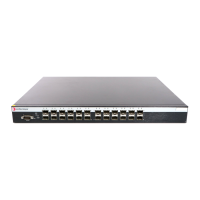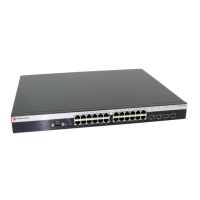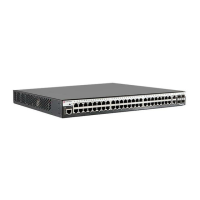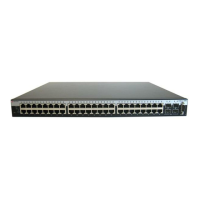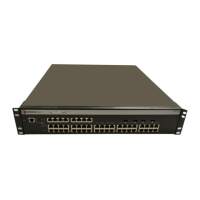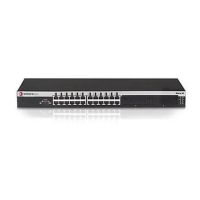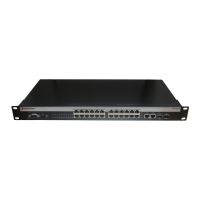Understanding and Configuring Loop Protect
15-32 Configuring Spanning Tree
• Communicating port non-forwarding status through traps and syslog messages
• Disabling a port based on frequency of failure events
Port Modes and Event Triggers
Ports work in two Loop Protect operational modes. If the port is configured so that it is connected
to a switching device known to implement Loop Protect, it uses full functional (enhanced) mode.
Otherwise, it operates in limited functional (standard) mode.
Connection to a Loop Protect switching device guarantees that the alternate agreement
mechanism is implemented and, therefore, the designated port can rely on receiving a response to
its proposal regardless of the role of the connected port. This has two important implications.
First, the designated port connected to a non-root port may transition to forwarding. Second, there
is no ambiguity when a timeout happens; a Loop Protect event has occurred.
In full mode, when a type 2 BPDU is received and the port is designated and point-to-point, the
timer is set to 3 times hello time. Limited mode adds a further requirement that the flags field in
the BPDU indicates a root role. If the port is a boundary port, the MSTIs for that port follow the
CIST (for example if the MSTI port timers are set according to the CIST port timer). If the port is
internal to the region, the MSTI port timers are set independently using the particular MSTI
message.
Loop Protect initializes the MSTI timer to zero and does not allow the designated port to transition
from listening to learning until the timer becomes non-zero. If the port is not designated, the timer
does not apply. Its state is controlled through normal protocol behavior.
A disputed BPDU is one in which the flags field indicates a designated role, a learning state, and
the priority vector is worse than that already held by the port. If a disputed BPDU is received, the
port is forced to the listening state.
Message age expiration and the expiration of the Loop Protect timer are both events for which
Loop Protect generates a notice level syslog message. You can also configure traps to report these
events, as well as a syslog message and trap for disputed BPDUs.
In addition, you can configure Loop Protect to force the locking of an SID/port when one or more
events occur. When the configured number of events happen within a given window of time, the
port will be forced into blocking and held there until you manually unlock it.
Example: Basic Loop Protect Configuration
The following sample configuration shows how Loop Protect functions in a basic Spanning Tree
topology.
In the example in Figure 15-15 on page 15-33, Switch 1 is the root bridge with BPDUs being sent to
both Switch 2 and 3. (Designated ports are labeled D and root ports are labeled R.) Switch 3 has
placed the port that connects to Switch 2 in a blocking state.
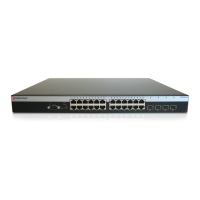
